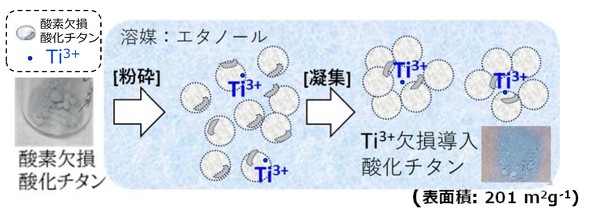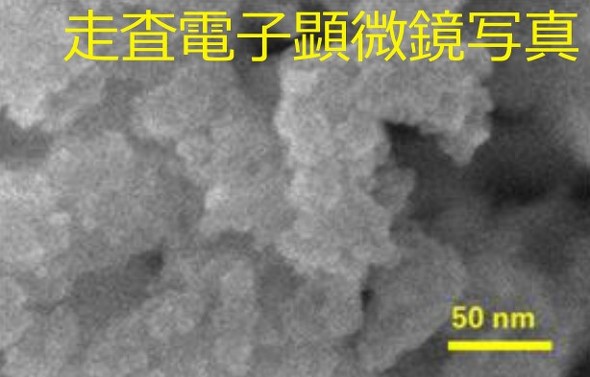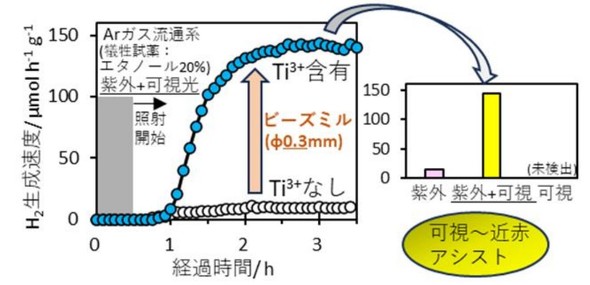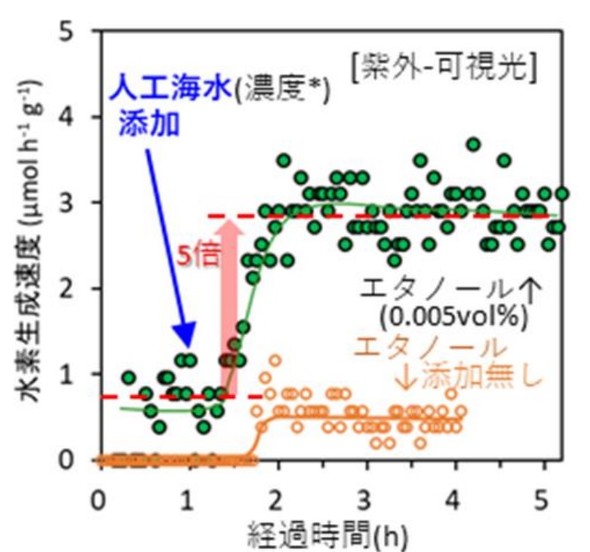Expectations for Further Development of Photocatalytic Technology: New Possibilities for Hydrogen Production
The Tokyo Metropolitan Industrial Technology Research Institute has announced a new photocatalytic hydrogen production technology utilizing titanium dioxide, which harnesses sunlight and seawater to unlock new possibilities for clean energy. The technique shows significant efficiency improvements through the stable fixation of Ti3+ and ethanol addition, surpassing conventional technologies. Future advancements and practical applications are anticipated, with attention focused on contributions to the sustainable energy sector.
Article source - Development of a Non-Precious Metal Photocatalyst for Green Hydrogen Generation from Sunlight and Seawater!– A New Technology Achieving Stable Ti3+ Incorporation and Increased Surface Area in Titanium Dioxide Photocatalysts –
https://www.iri-tokyo.jp/site/joho/press.html

Image of the Wet Bead Mill Grinding Process. Source: Tokyo Metropolitan Industrial Technology Research Institute

Scanning Electron Microscope Image of Ti3+-Doped Titanium Dioxide. Source: Tokyo Metropolitan Industrial Technology Research Institute

Comparison of Hydrogen Production Rates Before and After Treatment and Under Different Light Irradiation Types. Source: Tokyo Metropolitan Industrial Technology Research Institute

Effects of Ethanol in Artificial Seawater Addition. Source: Tokyo Metropolitan Industrial Technology Research Institute
(Cited from: Tokyo Metropolitan Industrial Technology Research Institute)
Research Points
- ・Stabilization of Ti3+: By crushing and agglomerating titanium oxide using an ethanol solvent, Ti3+ with oxygen deficiencies is stably fixed within the lattice. This significantly improved the reaction efficiency during light irradiation.
- ・Significant improvement in hydrogen generation by light irradiation: By simultaneous irradiation with ultraviolet light and visible light, the hydrogen generation rate stabilized 30 minutes after the start, achieving a generation rate 16 times faster than that of the original titanium oxide.
- ・Effect of adding ethanol: By adding a very small amount of ethanol (0.005 vol%) to artificial seawater, hydrogen generation during irradiation with ultraviolet and visible light became five times more stable. Ethanol is said to function as a sacrificial reagent for chloride ions and to play a role in aiding the reaction.
By enabling efficient hydrogen production not only through ultraviolet light but also through visible light, this technology greatly expands the potential for hydrogen as a sustainable energy source. Ongoing research aims to further enhance photocatalytic activity and expand the reaction environment, paving the way for the establishment of practical hydrogen production systems utilizing solar energy.
This technology's continued development is expected to lead to greater energy efficiency, expanded applications, and a low-cost, efficient hydrogen supply, contributing significantly to a decarbonized society.
